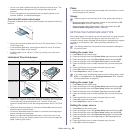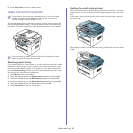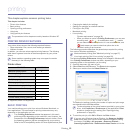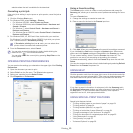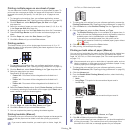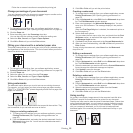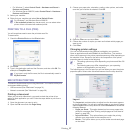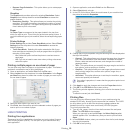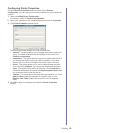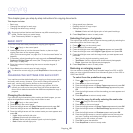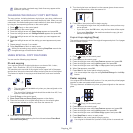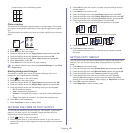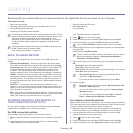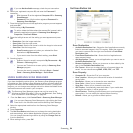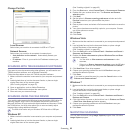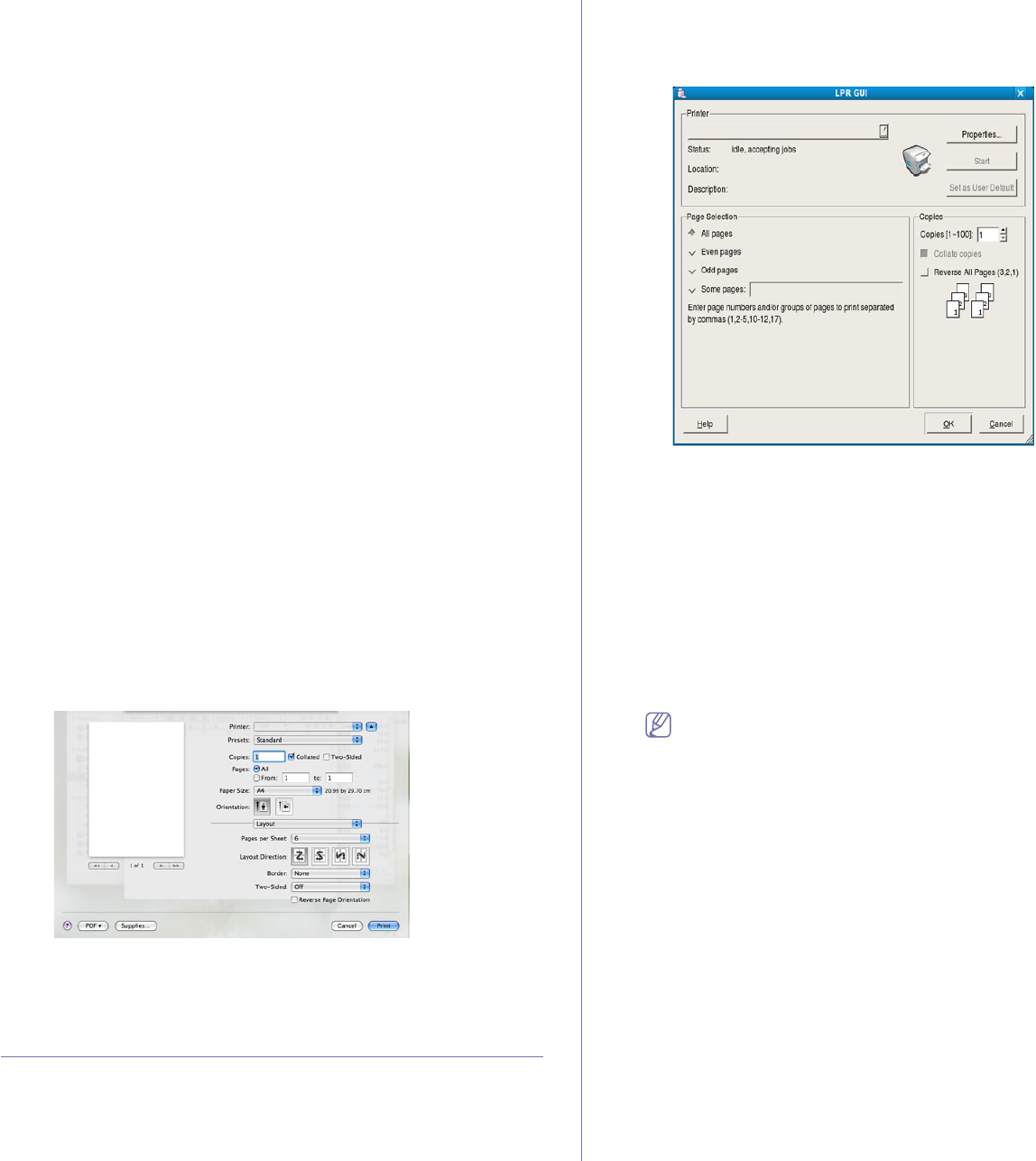
Printing_ 58
• Reverse Page Orientation : This option allows you to rotate paper
180 degrees.
Graphics
The Graphics tab provides options for selecting Resolution. Select
Graphics from the drop-down list under Orientation to access the
graphic features.
• Resolution (Quality) : This option allows you to select the printing
resolution. The higher the setting, the sharper the clarity of printed
characters and graphics. The higher setting also may increase the
time it takes to print a document.
Paper
Set Paper Type to correspond to the paper loaded in the tray from
which you want to print. This will let you get the best quality printout. If
you load a different type of print material, select the corresponding paper
type.
Printer Settings
Printer Settings tab provides Toner Save Mode options. Select Printer
Settings from the drop-down list under Orientation to access the
following features:
• Toner Save Mode : Selecting this option extends the life of your
toner cartridge and reduces your cost per page without a significant
reduction in print quality.
- On: Select this option to allow the printer to use less toner on
each page.
- Off: If you do not need to save toner when printing a document,
select this option.
Printing multiple pages on one sheet of paper
You can print more than one page on a single sheet of paper. This feature
provides a cost-effective way to print draft pages.
1. O
pen an application, and select Print from the File menu.
2. Sel
ect Layout from the drop-down list under Orientation. In the Pages
per Sheet drop-down list, select the number of pages you want to print
on one sheet of paper.
3. Select the other options you want to use.
4. Cl
ick Print, then the machine prints the selected number of pages you
want to print on one sheet of paper.
LINUX PRINTING
Printing from applications
There are a lot of Linux applications that allow you to print using Common
UNIX Printing System (CUPS). You can print on your machine from any
such application.
1. O
pen an application, and select Print from the File menu.
2. Se
lect Print directly using lpr.
3. I
n the LPR GUI window, select the model name of your machine from
the printer list and click Properties.
4. Change the print job properties using the following four tabs displayed at
the top of the window.
• Ge
neral : This option allows you to change the paper size, the paper
type, and the orientation of the documents. It enables the duplex
feature, adds start and end banners, and changes the number of
pages per sheet.
• T
ext : This option allows you to specify the page margins and set the
text options, such as spacing or columns.
• Graphics : This option allows you to set image options that are used
when printing image files, such as color options, image size, or
image position.
• Adv
anced : This option allows you to set the print resolution, paper,
source and special print features.
If an option is grayed out, it means that the grayed out option is not
supported.
5. Click Apply to apply the changes and close the Properties window.
6. Cl
ick OK in the LPR GUI window to start printing.
7. T
he Printing window appears, allowing you to monitor the status of your
print job.
To abort the current job, click Cancel.
Printing files
You can print many different types of files on your machine using the
standard CUPS way, directly from the command line interface. The CUPS
lpr utility allows you to do that. But the drivers package replaces the
standard lpr tool by a much more user-friendly LPR GUI program.
To print any document file:
1. T
ype lpr <file_name> from the Linux shell command line and press
Enter. The LPR GUI window appears.
When you type only lpr and press Enter, the Select file(s) to print
window appears first. Just select any files you want to print and click
Open.
2. In the LPR GUI window, select your machine from the list, and change
the print job properties.
3. Click OK to start printing.



